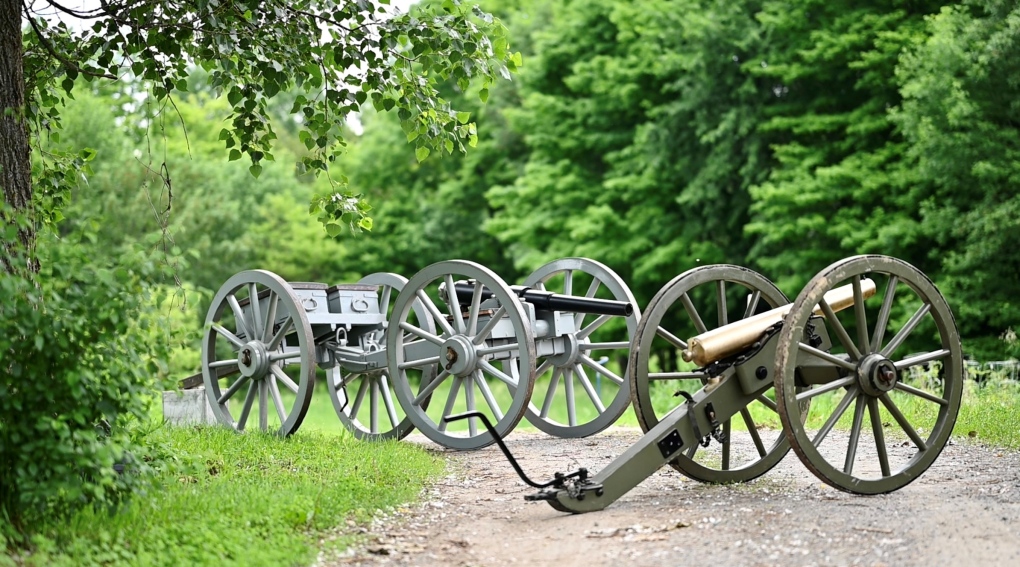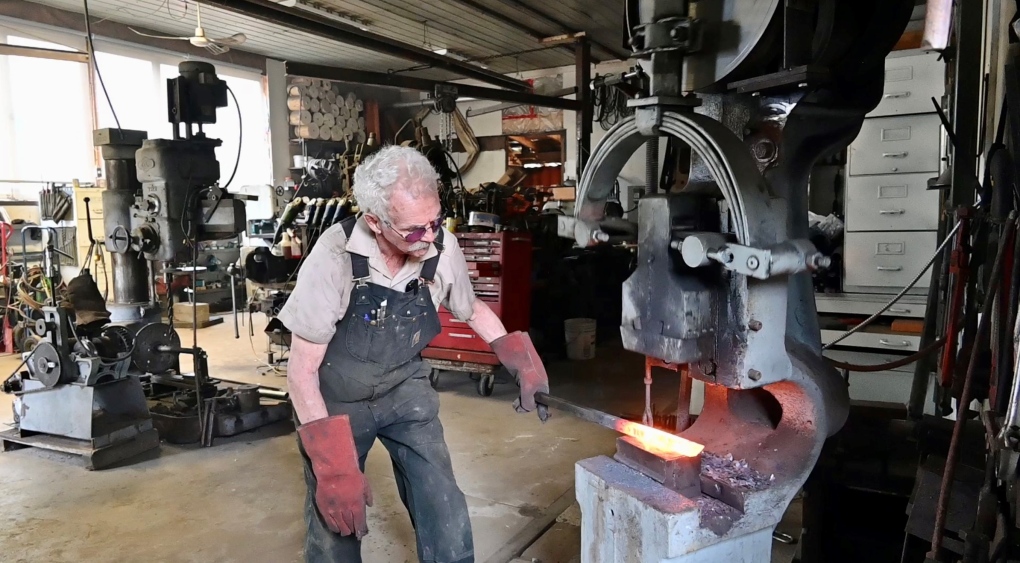A barrel of fun: Life's a blast for this Ontario cannon maker
Tony Walsh has lived in Lanark County’s Watson’s Corners since 1978; a lover of its geography and its people.
“Lanark County is sort of like a land-locked Cape Breton,” he smiles.
“Nice people. Nice area. To me, it’s heaven.”
After a 30-year military career in Canada’s Armed Forces, the former weapons technician and longtime, gifted blacksmith retired to this area.
Or so he thought.
Walsh, now 77, has never been one to put his feet up, or slow down. He’s too busy having a blast, exploring his explosive passion for history.
And cannons.
“As a blacksmith, I started doing metal work and making parts for someone who was selling cannons,” he says.
But when that person went out of business, Walsh got an idea.
“I had a whole bunch of cannon stuff that I had made up, and I thought I’m going to have to sell it. And to sell it, I ended making the entire cannon,” he chuckled.
“And that’s how it started.”
Before long, Walsh was taking orders from across North America. Civil War reenactors and museums wanted cannons.
So did Parks Canada, Signal HIll in Newfoundland, and the Halifax Citadel.
 Walsh’s historically accurate cannons are shipped across North American to museums and reenactor groups. (Joel Haslam/CTV Ottawa)
Walsh’s historically accurate cannons are shipped across North American to museums and reenactor groups. (Joel Haslam/CTV Ottawa)
For forty years, Walsh has been fashioning cannons to the highest specifications, using historic technical drawings and written descriptions from the era.
Gracing his property currently is a six pound breach loading rifle, modelled after a cannon designed by Britain’s Sir William Armstrong in the 1850’s.
“I really enjoy it because I try to duplicate Armstrong’s methods,” says Walsh.
“The man was a genius. The barrel was not one piece. One is shrunk on another, so the inside barrel is five ten thousands of an inch bigger than the hole it’s going in. I can make an Armstrong, from start to finish, in about two months,” he says.
“Just on its own, that’s $22 thousand.”
While most clients don’t launch projectiles from Walsh’s cannons (it’s more about the bang and smoke), his guns are capable of firing.
His confederate mountain rifle is used to fire at targets by reenactor groups in the US.
“It has to be accurate because they fire it live,” he says.
 Tony Walsh uses a power hammer to flatten a bar of steel used in his cannon production. (Joel Haslam/CTV Ottawa)
Tony Walsh uses a power hammer to flatten a bar of steel used in his cannon production. (Joel Haslam/CTV Ottawa)
Antique machinery is vital to production in Walsh’s shop. There’s a century old lathe and a massive power hammer, which saves the blacksmith time and energy when pounding steel.
At 77, Walsh does feel the wear and tear of the job. Building every component, including the large wooden wheels, can be physically taxing.
“Most of the wheels I work with are about five feet tall and weigh about two hundred and fifty pounds, so there’s no way you’re going to toss them around,” he says.
Despite the challenges of the job, seeing his guns work makes it all worthwhile.
“I’m having a ball,” he laughs.
So Tony Walsh’s adventure continues.
“Until I croak,” he smiles.
Seems there’s still lots of fire left in Lanark County’s cannon maker. His retirement will have to wait.
“I want to work to within three days of them shovelling sand in my face.”
CTVNews.ca Top Stories

B.C. woman facing steep medical bills, uncertain future after Thailand crash
The family of a Victoria, B.C., woman who was seriously injured in an accident in Thailand is pleading for help as medical bills pile up.
Freeland to present 2024 federal budget, promising billions in new spending
Canadians will learn Tuesday the entirety of the federal Liberal government's new spending plans, and how they intend to pay for them, when Deputy Prime Minister and Finance Minister Chrystia Freeland tables the 2024 federal budget.
Annual inflation rate increased to 2.9% in March
The annual inflation rate ticked higher in March compared with February, boosted by higher prices for gasoline, Statistics Canada said Tuesday.
Inmate who escaped from N.B. prison has long history of violent crimes
An inmate who escaped from Dorchester Penitentiary in Dorchester, N.B., on Saturday evening has a long history of violent crimes and a history of escaping custody.
Tim Hortons launches pizza nationally to 'stretch the brand' to afternoon, night
Tim Hortons is launching flatbread pizzas nationally in a bid to pick up more afternoon and evening customers.
Thousands of dollars worth of tropical fish stolen from Ottawa Valley restaurant
Ontario Provincial Police are investigating the theft of "several thousand" dollars worth of tropical fish stolen from an Upper Ottawa Valley restaurant last week.
Ontario woman charged almost $7,000 for 20-minute taxi ride abroad
An Ontario woman was shocked to find she’d been charged nearly $7,000 after unknowingly using an unauthorized taxi company while on vacation in January.
NASA confirms mystery object that crashed through roof of Florida home came from space station
NASA confirmed Monday that a mystery object that crashed through the roof of a Florida home last month was a chunk of space junk from equipment discarded at the International Space Station.
Budget 2024 'likely to be the worst' in decades, former BoC governor says
Without having seen it, former Bank of Canada governor David Dodge believes that Tuesday's 2024 federal budget from Deputy Prime Minister and Finance Minister Chrystia Freeland is 'likely to be the worst budget' in decades.































